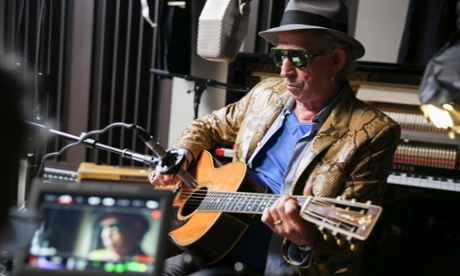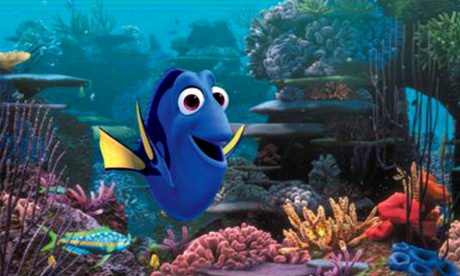Inside Out (2015)
By the time the credits rolled on Pete Docter’s boisterous existential satire, it was easy to imagine that we all have a Star Trek-style “bridge” inhabited by colourful motivators representing different aspects of the human persona, from Joy and Sadness to Anger and Disgust, inside our minds. Pixar’s ingeniously simple idea smartly reimagined a child’s inner turmoil as an epic white-knuckle ride through conflicting emotions and memories, as 12-year-old Riley Andersen desperately tries to adjust to strange and terrifying new experiences (such as broccoli infested pizza and hipster California classmates) with the help of the funny little people in her head. The sublime anarchy of the human condition beautifully rendered in dazzling primary colours. ★★★★★
Up (2009)
The best Pixar movies are often the ones the merchandise department must have struggled with the longest: it seems unlikely that Disney stores have sold many Carl Fredricksen and Russell toys over the years. Only Pixar would make a film about the friendship between a curmudgeonly old widower determined not to give up his home to the ravages of corporate greed and a perky boy scout with daddy issues. A movie to brush away cobwebs from the soul, remove cataracts from the eyes and remind us that the spirit of adventure can never be entirely grounded, no matter how old we are. ★★★★★
WALL-E (2008)
Like HG Wells’ The Time Machine, Andrew Stanton’s clarion call to the dangers of consumerism imagined a future in which we have lost our humanity through the horrors of indolence. But there are no terrifying Morlocks to menace the corpulent Eloi of the Axiom, only evil robot feeder types determined to keep their human charges in contented slothfulness for the rest of eternity. WALL-E himself makes for an unlikely, Chaplinesque hero, built entirely from mechanical parts yet somehow emerging as by far the story’s most ardently human participant. ★★★★★
Toy Story (1995)
Video never did quite kill the radio star, but Toy Story’s Oscar-winning CGI revolution really did wipe out the gilded Hollywood tradition for hand-drawn animation (though there have been occasional, sporadic rumblings of life in recent years.) However, an even more radical shift in the zeitgeist may have been the film’s relative absence of songs. Before Toy Story, most animated movies were musicals. After Woody, Buzz et al made their presence felt, the genre was able to climb out of its box and begin talking a whole new language. ★★★★★
Toy Story 3 (2010)
The real joy of this unexpected sequel lay in its ability to invent a meaningful circle of symmetry for the saga, Pixar boss John Lasseter throwing a curveball by reconfiguring the trilogy around Andy’s story arc, rather than that of his colourful playthings. But, before the soon-to-be freshman can say goodbye to his toys for ever and begin the pathos-drenched journey into adulthood, there’s one last adventure to be had thanks to the nefarious plotting of the saga’s greatest villain yet – an evil bear who smells of strawberries. ★★★★★
The Incredibles (2004)
A meta-infused take on the superhero movie that reimagined Alan Moore’s Watchmen for a younger generation and established Brad Bird as a talent to watch, after the film-maker’s brilliant, earlier non-Pixar effort The Iron Giant. Does The Incredibles hint that parents should strain against the conformity that might have turned them into identi-dads and mums by letting their offspring in on the secret of their younger selves? Perhaps this explains all the kiddies raving at Glastonbury these days. ★★★★★
Ratatouille (2007)
What a strange confection this foodie feast represents. Despite its Francophile framing, Bird’s paean to epicurean pleasures feels fiercely Dickensian in its depiction of a naive young cuisinier vying to make his way in a cynical world (with the help of a gourmet rat). It was released in a golden age for Pixar during which the studio, by now owned by Disney, won the best animated film Oscar four years in a row. ★★★★☆
Finding Dory (2016)
Andrew Stanton’s return to animation after the disastrous response to John Carter does far more than just tick all the sequel boxes. Finding Dory’s genius (though some might call it cheating) is to find preposterous ways to bring the watery world of clown fish and blue tangs closer to our own as Ellen DeGeneres’ forgetful fish goes searching for her long-lost parents in a coastal oceanarium populated by grumpy octopi, helpful sea lions and a godlike disembodied voice known only as Sigourney Weaver. A fresh catch as bountiful as this is an encouraging sign that Pixar is entering a new, rich vein of form. ★★★★☆
Toy Story 2 (1999)
Disney wanted a quick, cheap, straight-to-DVD sequel to Toy Story, and part two of Woody and Buzz’s adventures, in which the rootin’ tootin’ cowboy is stolen by a toy collector and reunited with the Roundup Gang, was almost a disaster. Only Pixar’s refusal to compromise and its commitment to work around the clock to meet release deadlines allowed the final film to live up to the quality of its predecessor. With a fresh focus on the existential dread of the abandoned plaything, the sequel gave us perhaps the most emotive segue in animated history: Jessie the cowgirl’s tearful lament When Somebody Loved Me. ★★★★☆
Monsters, Inc. (2001)
No compendium of childhood eccentricities would be complete without taking in the night terrors, so Pixar invented an entire world of menacing creatures whose job is to scare the living daylights out of poor little kiddies. John Goodman and Billy Crystal’s incomparable double act as Sulley and Mike brought a warm humanity to the freaky netherworld of Monstropolis, whose titular grand factory of ever-shifting doors, each one leading to a child’s bedroom, represented a masterful feat of outlandish conceptual thinking. ★★★★☆
Finding Nemo (2003)
Marlin the clownfish’s fishy odyssey across the ocean in search of his missing son was the first Pixar film to really go in hard on the age-old animated staple, the death of a family member. But, while Disney classics such as Bambi and The Lion King balanced grief with an abiding sense of fate and glorious birthright, director Andrew Stanton used it as fuel for comedy, as dear old dad is forced to leave the safety of the reef for open waters populated by all manner of wickedly vivacious creatures, from vegetarian sharks to surfer dude turtles and garrulous Aussie gulls. ★★★★☆
Brave (2012)
Pixar’s sole foray into medieval fantasy is a rambunctious, vivacious affair that celebrates the power of non-conformity while pecking away at the nagging scab of childhood rebellion. Sister studio Disney Animation may have attracted more attention, with the following year’s Frozen, for reminding us that young women are not entirely reliant on romance and the willing arms of a charming suitor. And yet, with this lively, Oscar-winning tale of Caledonian pluck, Pixar was the first to split the arrow. ★★★★☆
The Good Dinosaur (2015)
A long and tortuous production process saw this tale of talking apatasauruses delayed by more than a year, with original director Bob Peterson removed to allow Pete Sohn to take charge. It’s part western, part coming-of-age story, with dino Arlo forced to find his own way in the world following the death of his hardworking dirt-poor farmer daddy. There are some nice touches, from sociopathic, parasitic pterodactyls to unexpectedly decent cowboy tyrannosaurs, but you wonder if the film suffered from the high bar Pixar had set for itself. It is noticeably superior to rival studio Dreamworks Animation’s own prehistoric fable, The Croods. ★★★★☆
A Bug’s Life (1998)
Like its controversial rival Antz, Pixar’s second film came into being because insect-like shapes and surfaces were among the few styles of animation that nascent CGI technology could do really well. Unfortunately for the studio, Dreamworks Animation’s venture had Woody Allen on board and a smarter storyline that used insects as a metaphor for the rigidity of human societies. Yet A Bug’s Life is decent enough entertainment, and in visual terms at least it has dated better than its competitors. ★★★★☆
Monsters University (2013)
Monsters Inc’s genius was to imagine that the monsters hiding in childhood closets are mostly just friendly, freakish-looking fellows going about their jobs. But this unnecessary prequel insisted on showing us what happened to Sully and Mike before they accidentally extracted little cutie Boo from her cosy bedroom. Tales of student debauchery can make fine R-rated comedies and semi-raunchy 80s frat boy romps, but they are far from logical material for a children’s animated film. ★★★☆☆
Cars (2006)
Perhaps the most all-American of Pixar’s films, Lasseter’s petrolhead paean to forgotten small towns probably makes more sense if you have driven along route 66 and seen some of these abandoned communities in the heart of America. Except even then, it is not all that interesting. Lightning McQueen may have been seduced by the hokey old charms of provincial life, but by the end most viewers were willing him to get back to the bright lights of the LA racetrack as soon as possible. ★★☆☆☆
Cars 2 (2011)
If Lasseter’s fondness for American car culture was the inspiration for the first movie, it’s not hard to suspect that the billions of dollars in resulting merchandise profits inspired the creation of a sequel. The follow-up completely departs from its roots via a shark-jumping gear shift into spy movie territory, as Mater the hillbilly tow-truck is accidentally recruited by some motorised British secret agents to help explore an international conspiracy involving motor fuel, while his good buddy Lighting embarks on a visually spectacular tour of global race tracks. After the late noughties golden era, this was the movie with which Pixar slipped lazily into reverse gear. ★★☆☆☆











